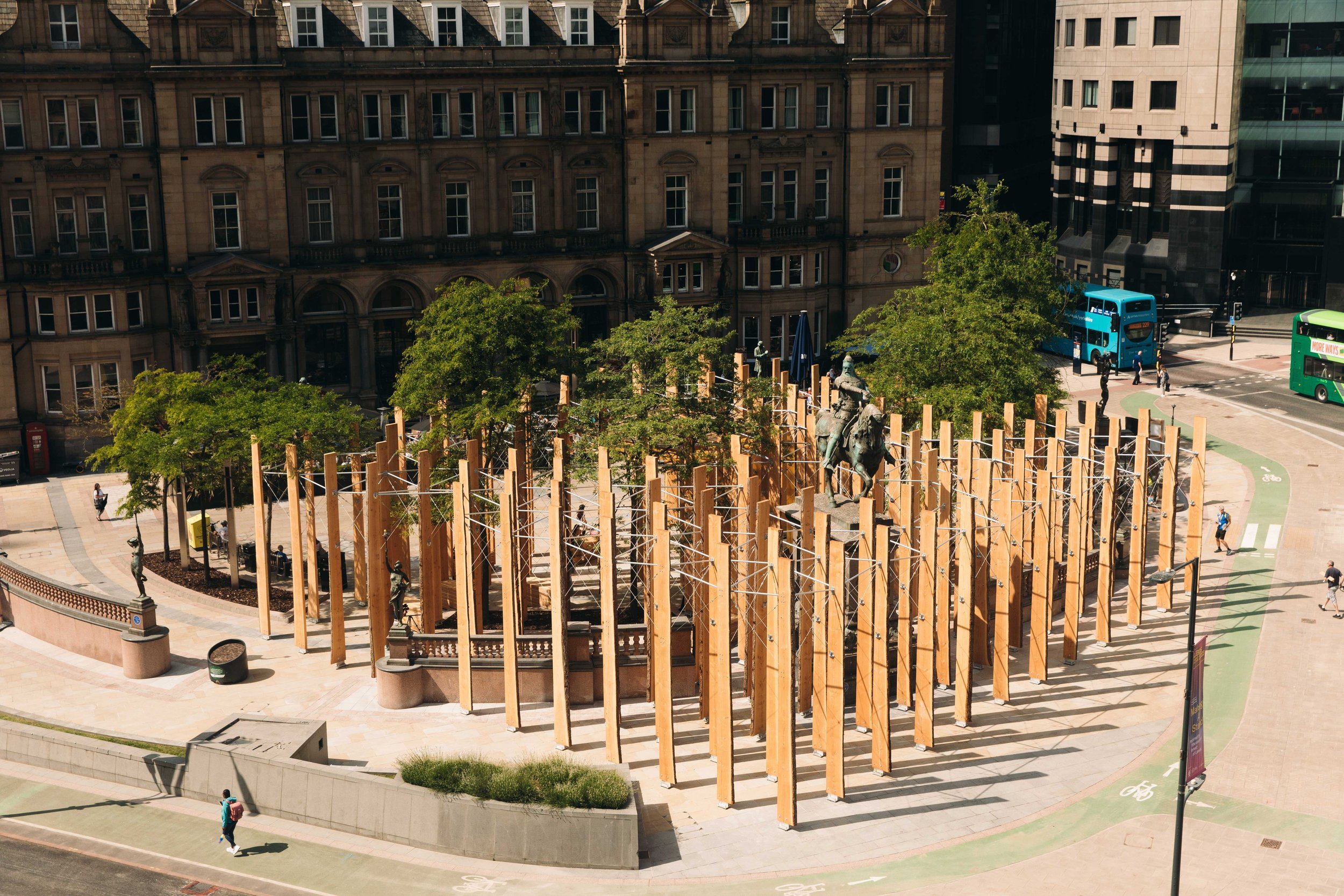Background
‘Making A Stand’ is a powerful temporary installation that took root in the main public square outside Leeds railway station. It aimed to 'disrupt' this popular pedestrian area by creating an awe-inspiring artwork using commercially grown timber ‘borrowed’ from the construction supply chain, which can be repurposed when the work is dismantled at the end of the year.
Comprising 127 seven-metre-high timber fins, this ‘sculptural forest’ is co-created by award-winning environmental architects Studio Bark and acclaimed visual artist Michael Pinsky (both known for creating work that challenges the status quo on climate change and urban design). Amidst the ongoing discourse surrounding climate protests and their impact on everyday lives, ‘Making A Stand’ is a thought-provoking artistic intervention that invites people to pause, explore and contemplate major environmental issues in a visually striking and provocative manner.
In 2023, Whitney Sawmills worked with Studio Bark to successfully fulfil their brief to source UK-grown Douglas fir timber that is trackable back to the stump. This Douglas fir can be seen as the timber fins making up the ’Stand’.
Image by Tom Joy
The Challenge
Wilf Meynell, Founder of Studio Bark, explains how, through the artwork, they were “keen to explore why approximately 80% of the sawn softwood used in the UK is currently imported, whilst also stress testing the capabilities of the UK Forestry industry. The sculpture demands a timber that is tall, girthy, dead knot-free and hits a high structural grade, whilst being durable to the elements. Not many timber species living in the UK can do all of these things, and even fewer UK forests can supply such a specification.”
Making a Stand aimed to “Pause the Supply Chain:
For a typical Construction project, a likely supply route for timber in the UK may follow:
Growing > Felling > Transport > Planking > Processing > Transport > Merchant > Transport > Fabricator > Transport > Site > Use > Demolition> Transport > End of Life (landfill/incineration).
The further down the supply chain, the more bespoke the material becomes. We were keen to pause the supply chain after the initial planking phase, the point at which the resource has the most possible future uses and retains a high resource value.
With light touch processing, designed to have the least impact on the timber, the fins are then stacked vertically in City Square in Leeds for 6 months.” (Wilf Meynell)
The Brief
The project required traceable timber of British Standard Grade C24 with a waney edge and wherever possible with the shortest distance from stump to sawmill.
Image by Ellen Christina Hancock. A close-up of a Douglas fir timber fin, showing the waney edge.
Finding slow-grown Douglas Fir of this quality was challenging, but we found some near Hereford and Chichester. After researching provenance impacts on the characteristics of Douglas Fir timber, we found a stand of suitable Douglas Fir trees in the south of England near Chichester. Interestingly, the Douglas Fir thrives in western areas of the UK, where rainfall is higher and is usually ready to harvest at approximately 45 to 50 years old. However, the Douglas Fir needed for this project would need to be grown more slowly to be of the required grade, the climate in Chichester meant that the stand of trees used in Making a Stand was slower grown, felled at approximately 60 years old to be of the correct indicative grade.
Whitney Sawmills overcame a second challenge by working with TDUK to ensure that the Douglas Fir indicated the structural grade required for the piece. Ideally, Grade C24 was required; however, the British Standards criteria don’t include waney edge as a part of the C24 specification. Through collaborating with TDUK, we ensured that we communicated that the quality of the Douglas Fir indicates that it would be C24 if it didn't have a waney edge. Therefore, we avoided jeopardising Whitney Sawmills’ certified grader status.
Decision-Making Process
Wilf shared that “the close relationship with resources has in the most part been lost in recent decades, due to the rise and ease of global supply chains. Designers, makers and builders are often disconnected from the provenance of the materials they specify and use.”
Forestry Facts and Figures 2023 states that the UK is the third largest importer of timber. To help remedy this disconnection, working with a Grown in Britain certified sawmill like Whitney Sawmills can help clients source timber in a way that encourages connection with the provenance of the materials they specify and use.
There are additional benefits, Dermot Doyne, Sawmills Manager, reminds us that “it is important to source timber responsibly because responsible felling protects the timber supply chain, biodiversity and increases carbon capture.”
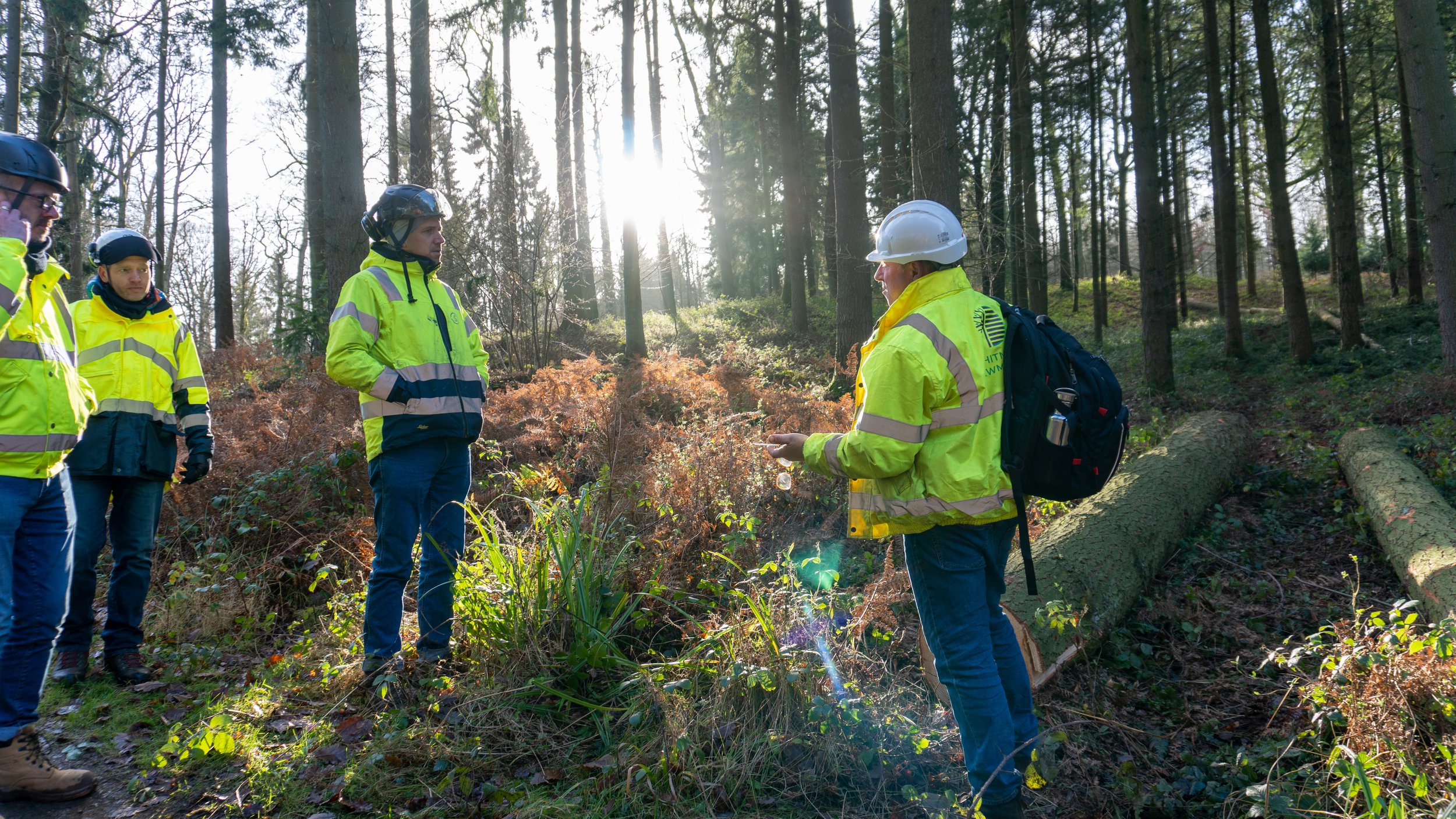
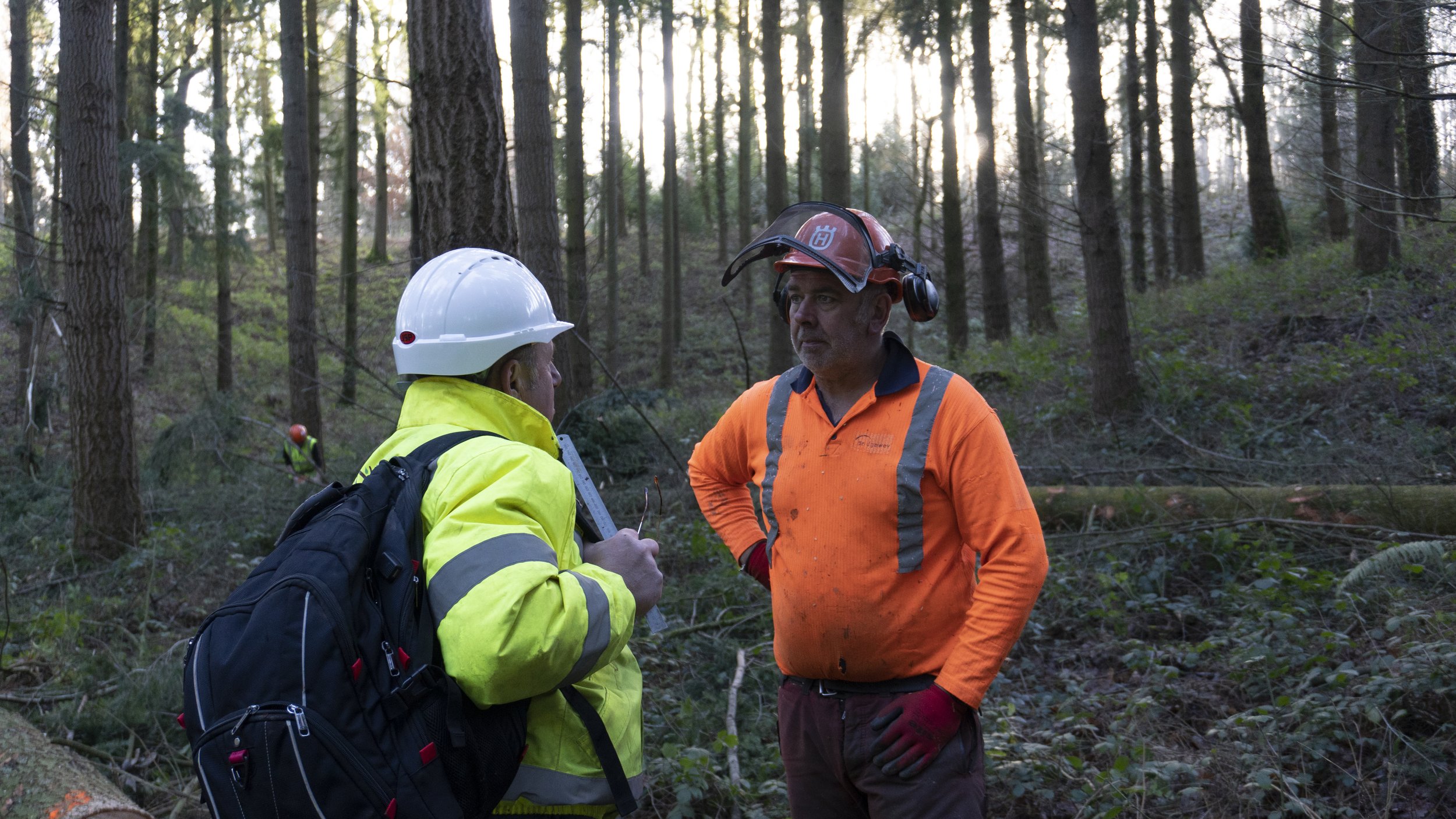
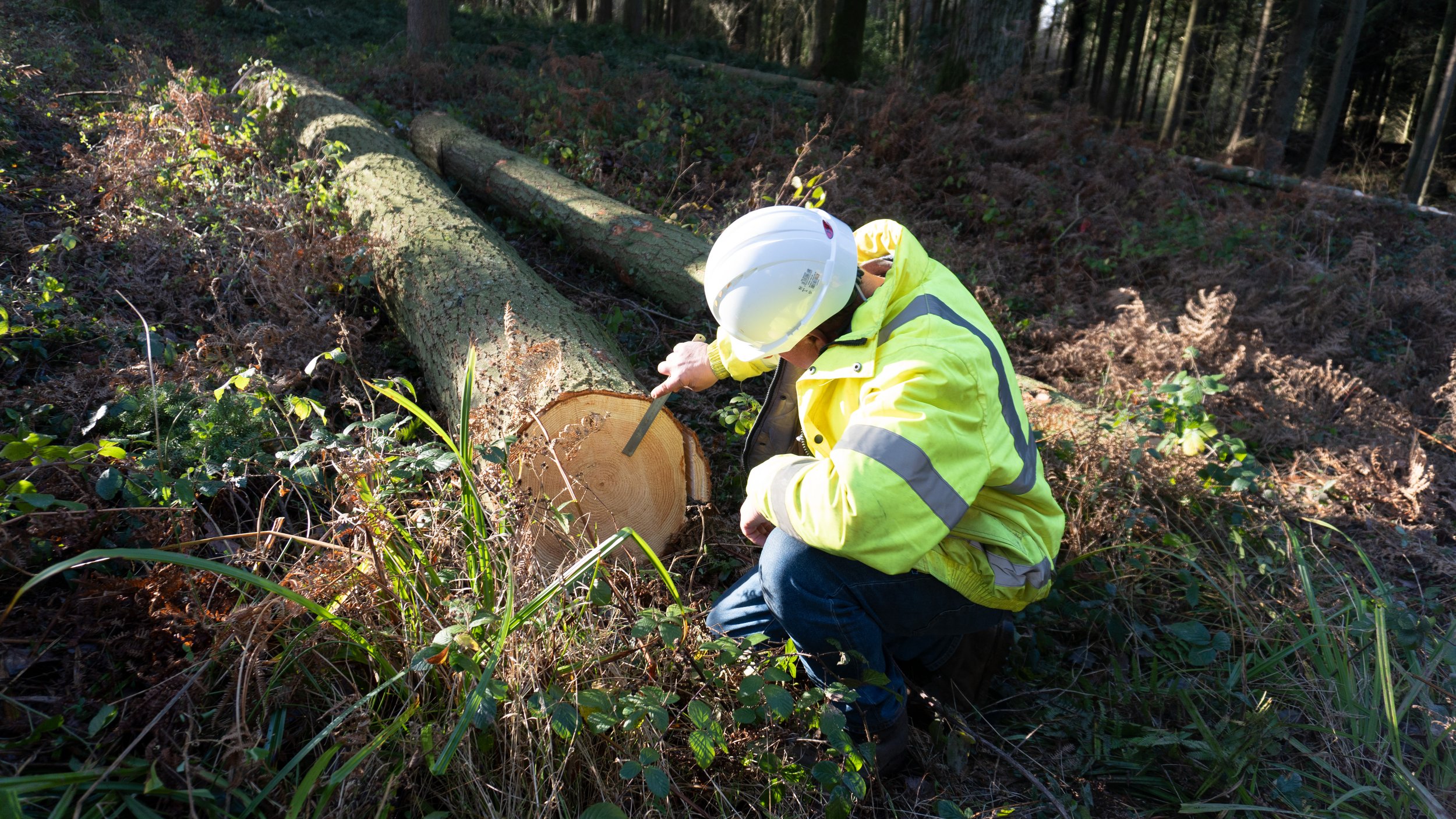
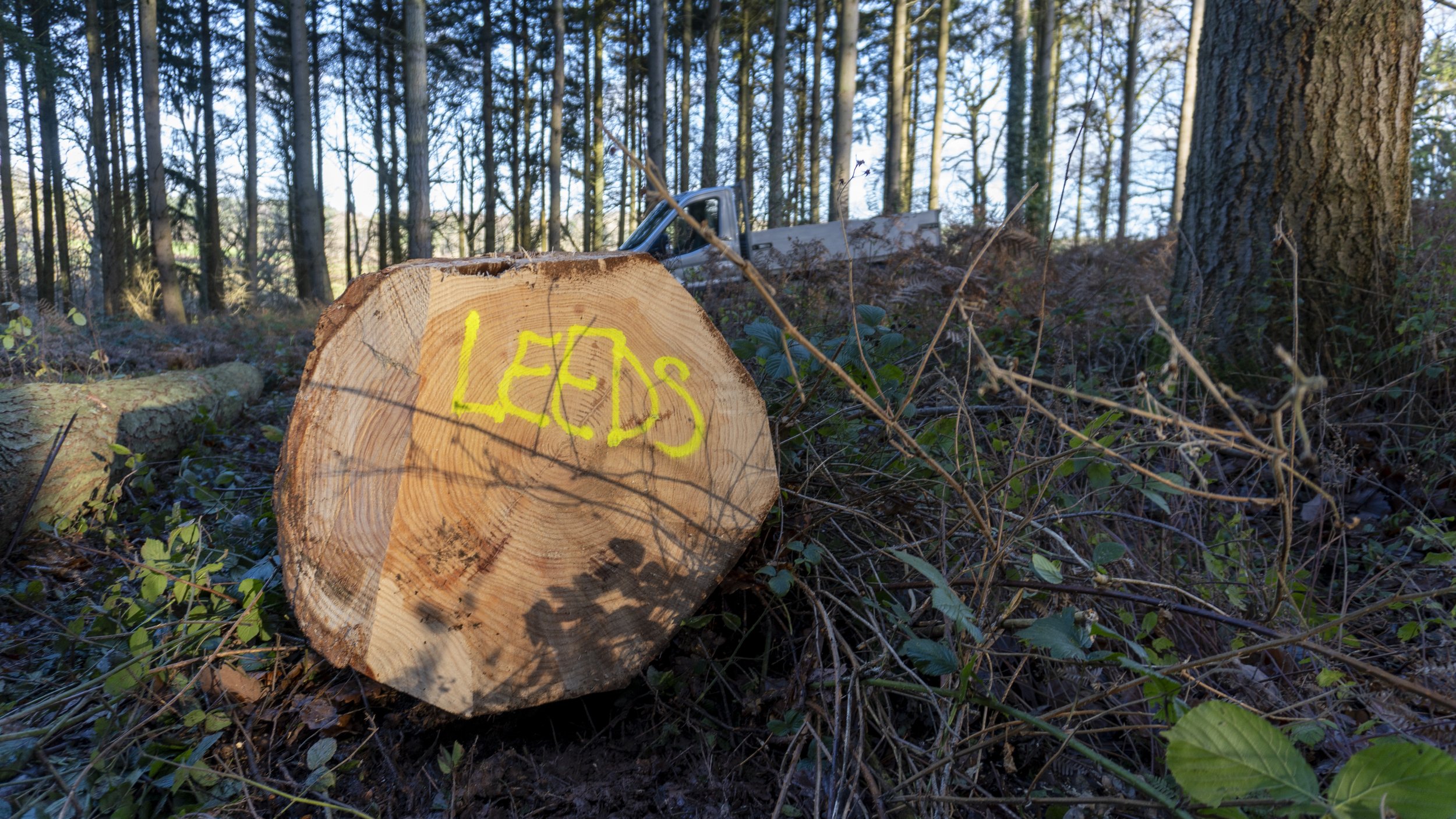
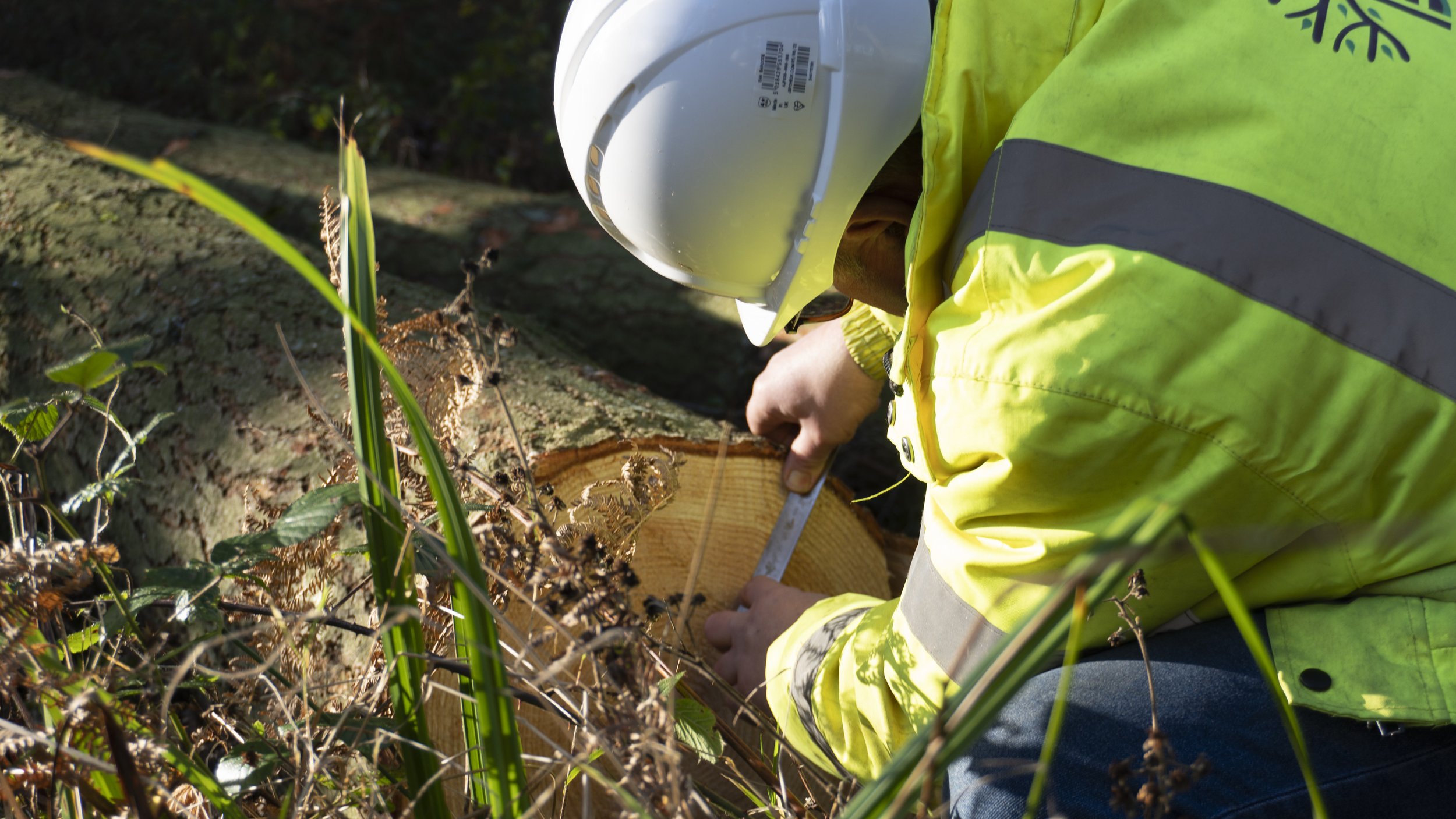
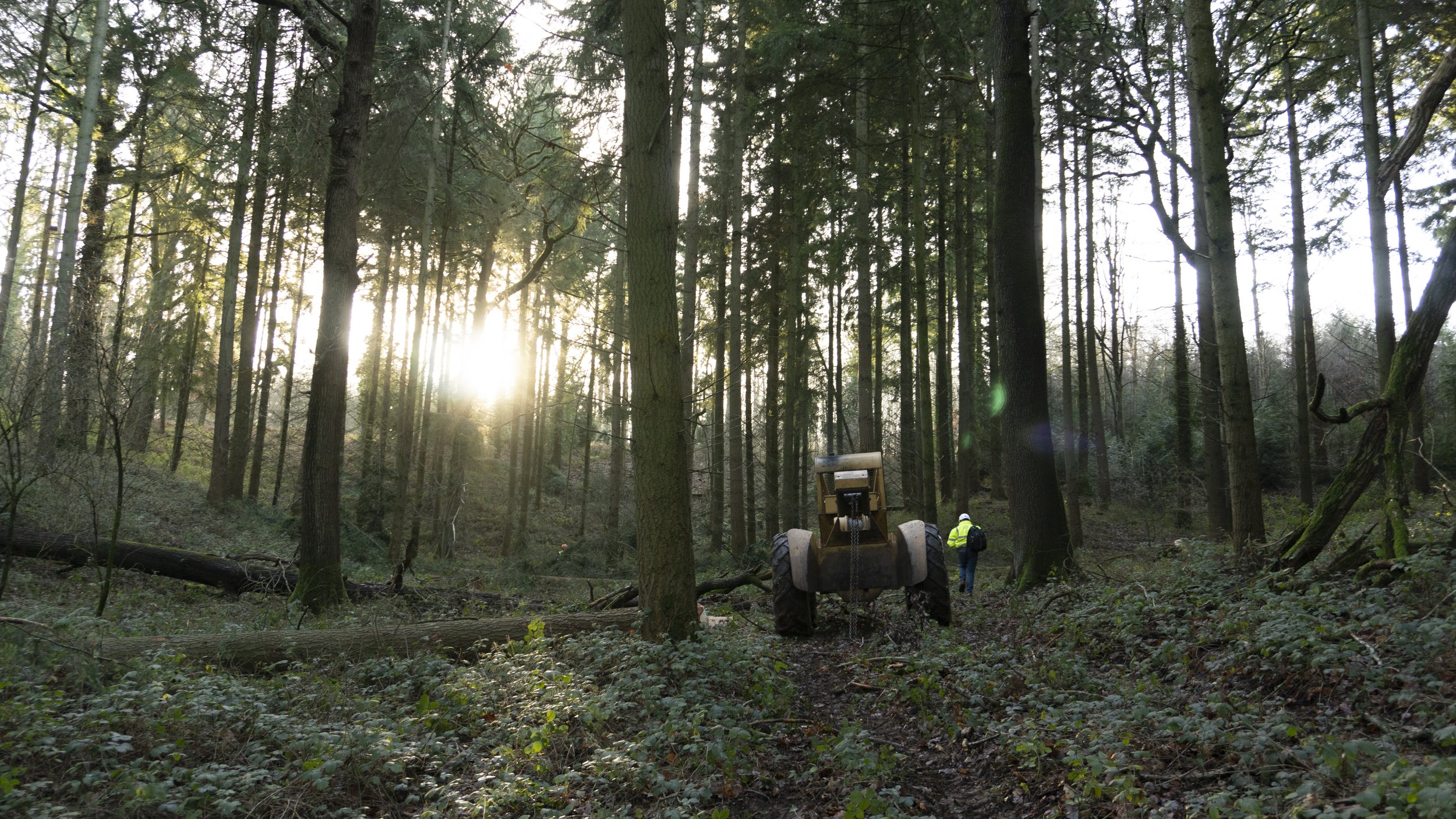
"We chose Whitney Sawmills to support our Making a Stand project because they offer much more than sawmilling! The team come with a lot of invaluable knowledge and expertise and furthermore helped us source a pretty challenging specification within close proximity of the mill. Furthermore, the quality machinery and skilful operators made it easy for us to be quite prescriptive over the cutting and handling of our Douglas Fir Fins. Thanks to all at Whitney!" – Wilf Meynell
The outcome
Image by Tom Joy
Making a Stand’s timber fins, which have been 'borrowed' from the supply chain at a point between felling and stacking, are positioned vertically, making them quite literally 'stand up' like a ‘stand’ of trees in nature. The fins work together with a webbed canopy of steel wire ropes and steel struts, acting in tension and compression to ensure minimal damage to the wood so that it can be repurposed at the end of the year, minimizing waste while maximising opportunities for carbon capture and storage.
“Making a Stand does not offer a simple ‘oven-ready’ solution to reducing the impact of construction to a theoretical point of climate neutrality. We hope that it Stands to illuminate complexities of land use, resource use and the supply chains that connect them. The industry, the public and politicians must face this challenging reality if we are to turn the tide on the climate crisis.” (Wilf Meynell)
After featuring in the installation, the Douglas Fir is now stored at Whitney, awaiting its future as locked carbon in other projects.
Image by Georgina Colman
Awards
Yorkshire Regional IStructE Small Project of the Year 2023
sources
Member's Blog: Making a Stand By Wilf Meynell — Woodland Heritage
Making A Stand (leeds2023.co.uk)
Douglas Fir (Pseudotsuga menziesii) - Woodland Trust
Other
Education : Timber Development UK, Home - Evolving Forests Education : Timber Development UK, The White Wall Company Structure Workshop – Engineering design consultancy, Allt environmental structural engineers, Stage One, Phil Supple - lighting design (psld.uk), Making A Stand (studiobark.co.uk), M i c h a e l P i n s k y – Contemporary Visual Artist: International Touring Exhibitions and Commissions in the Public Realm
Authored: 08/03/2024
Last updated: 21/03/2024




